The Importance of Strength and Power Training During Aging
Posted by The Arena Club on August 5, 2024
As we age, our bodies undergo a series of inevitable changes. Muscle mass and strength decline, bone density diminishes, and balance becomes more precarious.
Muscle mass, according to an article in the National Library of Medicine, decreases approximately 3 to 8 percent per decade after the age of 30 and this rate of decline is even higher after the age of 60.
“This involuntary loss of muscle mass, strength, and function is a fundamental cause of and contributor to disability in older people,” says the research article.
Strength and power training, however, can counteract and slow this process.
“While there is no way to fully “stop the clock”, it’s possible for many older adults to increase muscle strength with exercise, which can help maintain mobility and independence into later life,” says the National Institute on Aging.
Let's examine why strength and power training matter and how you can get started to a healthier future.
The Difference Between Strength and Power Training
Strength and power training, while related, focus on different aspects of muscle performance:
- Strength Training
- Focuses on increasing the amount of force muscles can produce.
- Typically involves lifting heavier weights with slower, controlled movements.
- Aims to improve the ability to overcome resistance, regardless of speed.
- Usually involves fewer repetitions (1-6) with heavier loads (80-100 percent of 1RM or one-repetition maximum).
- Power Training
- Emphasizes the rate of force production.
- Involves moving weights or resistance as quickly as possible.
- Aims to improve the ability to exert force rapidly.
- Often uses lighter loads (30-60 percent of 1RM) with explosive movements.
Why “Load” Plays a Crucial Role in Training
Load plays a crucial role in both strength and power training, but is applied differently:
- In strength training, load refers to the amount of weight lifted, typically a high percentage of an individual's one-repetition maximum (1RM).
- For power training, the load is generally lighter to allow for faster movement speeds, but still challenging enough to stimulate adaptations.
The key is that both types of training require a significant enough load to produce the desired adaptations.
For strength training, this means using weights that challenge your muscles to near failure.
For power training, the load should be heavy enough to provide resistance but light enough to allow for explosive movements.
Remember, you want to work under a certain level of strain, whether that is your own body weight or using an external source such as dumbbells or a machine.
By incorporating both strength and power training into your routine, you can develop a well-rounded fitness profile that enhances your ability to lift heavy objects and move quickly and explosively.
Why Strength and Power Training Matter
There are many reasons why strength and power training matter for better health as you age. Here are five key benefits:
- Preservation of Muscle Mass: Muscle mass naturally decreases with age, a condition known as sarcopenia. Strength training, such as weight-bearing and resistance exercises, helps preserve and even build muscle mass. This not only enhances physical appearance but also supports functional independence, making everyday activities easier and safer.
- Bone Health: Improving overall skeletal health is important in a population where 75% of adults don’t return to their previous level of daily function following a major fracture. As we age, bone density tends to decline, increasing the risk of fractures and osteoporosis. Weight-bearing exercises and resistance training can stimulate bone growth, reducing the risk of these debilitating fractures.
- Improved Balance and Stability: Falls are a leading cause of injury among older adults. Strength and power training, especially exercises that focus on the core and lower body, can significantly reduce the risk of these events. Improving balance and stability reduces the risk of falls, enhances confidence in mobility, and leads to overall improved quality of life.
- Enhanced Metabolic Health: Strength training boosts metabolism by increasing muscle mass, which in turn helps regulate blood sugar levels and improve insulin sensitivity. This can be particularly beneficial for managing and preventing type 2 diabetes and other metabolic disorders. Additionally, boosting metabolism can have a positive impact on body composition, increasing calories burned while decreasing body fat.
- Mental Well-being: Regular physical activity, including strength training, has been linked to improved mood, reduced anxiety, and enhanced cognitive function. The sense of accomplishment from achieving fitness goals can also boost self-esteem and overall mental health.
Let’s Get Started!
We find at The Arena Club that people who want to improve their physical fitness often do not know where to start. Here’s a gameplan:
- Consult a Professional: Before starting any new exercise regimen, it’s wise to consult with a healthcare provider or fitness professional, especially if you have pre-existing health conditions. Your healthcare provider can identify precautions as you begin resistance training while a highly qualified fitness professional can teach you proper technique to avoid unnecessary risk of injury.
- Start Slow: Begin with lighter weights and focus on proper form to avoid injury. Getting started with a fitness professional, even for a few sessions, provides the opportunity to learn, ask questions, and establish an appropriate routine. Then you can gradually increase the intensity and complexity of exercises as your strength improves.
- Incorporate Variety: Include a mix of exercises that target different muscle groups and incorporate functional movements that mimic daily activities. Sitting and standing, pushing and pulling, and stepping/walking are all great places to start. This holistic approach can yield the best results in terms of strength and overall fitness.
- Stay Consistent: Aim for at least two days a week of strength training, with each session including exercises for all major muscle groups. As the weeks progress, try adding a third or fourth day as your schedule allows. Consistency is key to maintaining progress and enjoying long-term benefits.
Empower Your Golden Years
Strength and power training is not just for the young and fit—it’s a crucial component of healthy aging.
By integrating resistance exercises into your routine, you can preserve muscle mass, enhance bone density, improve balance, and boost overall well-being.
The result? A more active, independent, and fulfilling life. At the Arena Club we offer small group training and personal training that can help empower your Golden Years! Reach out to our experienced trainers today for a free assessment.

The Arena Club
The Arena Club is a gym club that is dedicated to the health and wellness of residents in Harford County. Our doors are open to people of all ages, health statuses, and walks of life.
Categories
- Membership
- Training
- Group Exercise
- Nutrition and Weight Loss
- Athletics & Sports Performance
- Aquatics
- Kids & Family
- Wellness
